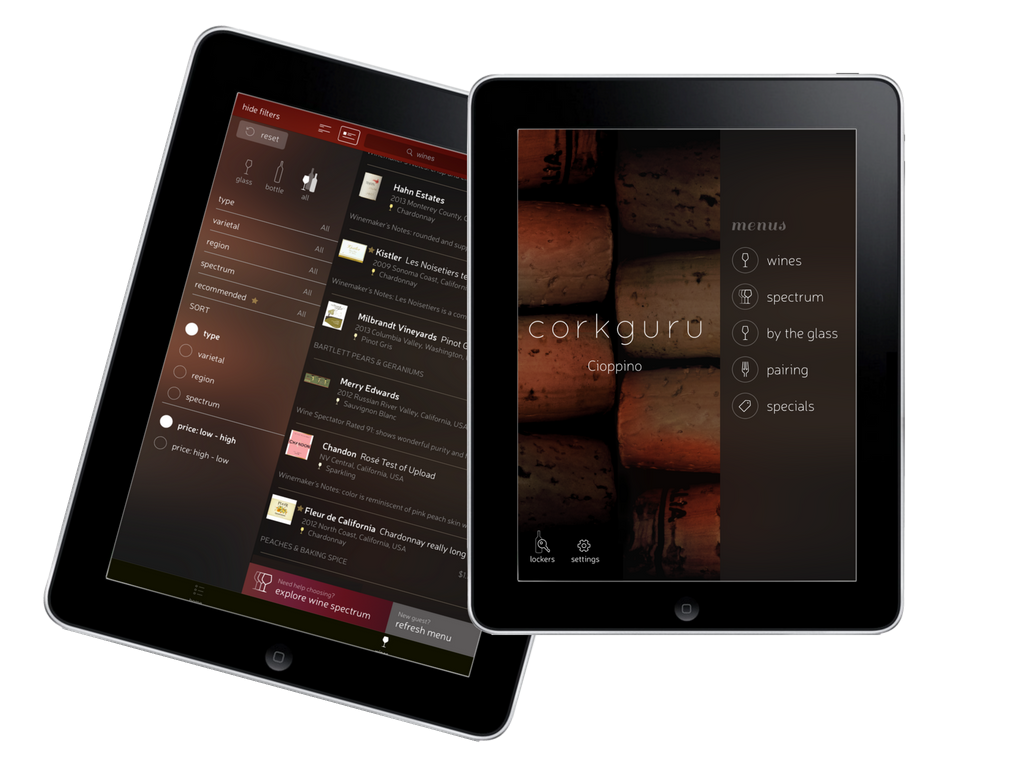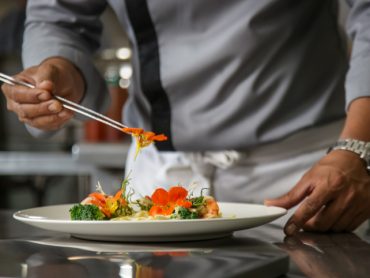In Vino Veritas Part LXX: The Benefits of Wine Apps
Deploying technology for all aspects of hotel operations is increasingly becoming a surefire way to save costs, drive revenues and develop richer data on your guests’ behavior. And the restaurant’s wine list is no exception.
One of the most prominent ways to leverage technology to boost wine sales is to digitalize your inventory then give customers a fully electronic means of interacting with your beverage offerings. To this end, I recruited the founder and CEO of CorkGuru, Danielle Gillespie, to discuss some specifics on how to transition to a digital menu as well as a few of the more indirect ways that such tablet and mobile apps can encourage bottle upsells and enhance overall meal satisfaction.
What are the most tangible benefits for digitizing a wine list?
The bottom line is lift and shift: people who are novice wine drinkers will take a chance on something other than a glass of house red or white. People armed with various levels of wine knowledge will take a chance on an unknown bottle of wine and, will usually spend more money. In either case though, we discovered through a CorkGuru-sponsored survey that somewhere around 70% of wine consumers are open to suggestions but don’t proactively seek them for a variety of reasons. That’s a lot of potential money being left on the table.
Wine lists can be intimidating. How do tablet-based menus help alleviate customer fears?
For most people today, devices and apps are familiar. Because of this technology evolution, tablet-based menus can offer a frictionless way to get started with the traditionally intimidating experience of choosing a bottle of wine. Most tablet menu solutions offer different ways to sort and filter wine (by price, region, varietal and so on) making it easy to get the ball rolling. As users navigate deeper into the menu, they can see label images and descriptions. This discovery path is non-threatening and users can therefore make informed and inclusive decisions. The outcome can be beneficial for both patron and establishment because such consumers will be confident and practically upsell themselves.
What’s the psychological principle behind customers seeing bottle labels and images of the wine instead of just words on the page?
If, as consumers, we are compelled by the description of the vineyard, its owners or its history, we are likely to pay more for a bottle. Expectation influences response. Once we become excited about our wine choice through the use of visual and written tips, our positive anticipation will make our experience more enjoyable.
 What features does CorkGuru’s app have to further enhance interactivity and customer satisfaction?
What features does CorkGuru’s app have to further enhance interactivity and customer satisfaction?
We’ve developed SpectraVin, a way for consumers to choose wine by general taste and color profile. Being able to filter wine by descriptors such as ‘big bold red’ or ‘bubbles’ provides a fun and engaging way for wine lovers to get started with a menu without needing to have extensive knowledge or vocabulary about varietals and regions.
How can a digital menu work to improve inventory management?
Digital wine menus are able to return key insights to wine program managers. Information such as what people are searching and browsing can inform pricing models and seasonal restocking orders. Moreover, when that same information is compared to what consumers are actually purchasing, another level of intelligence can be unlocked, helping to move stalled inventory.
Can you describe one or two situations where a digital wine list can be used to test certain products and price points to enhance sales?
Because digital wine menus can be updated in real-time, wine program managers can tag and price wines ad hoc on a weekly basis, then compare results week-over-week. For example, a wine’s price could be raised or lowered and the resulting product sales examined for week one versus week two. Likewise, wines could be tagged as ‘special’, ‘rated’ or ‘library’. Tagging wine with a particular attribute could draw more attention to a lesser-known label, limited inventory or seasonally available product.
Are there a specific success story from CorkGuru’s clients that you would like to mention?
David Lamatrice of Bistecca Steakhouse and Wine Bar, located south of Pittsburgh amidst six major hotels, says adopting a digital wine platform has been transformative for the business. Since installing CorkGuru, he’s been able to adapt menus to different specials (such as early diners and sporadic road warriors), save on printings costs and help guests try something new.
How can a digitized wine list be leveraged to enhance guest personalization and packaging?
Using a digitized wine list provides a unique opportunity to record ordering behaviors into guest profiles. Understanding a guest’s wine preferences and habits offers the opportunity to customize offers, specials or ‘insider wine tips’ for guests to enjoy during their stays. These insights could even be used to prime travelers before they arrive, generate incremental onsite revenue, or entice them back for a return visit. Particularly for business travelers, you may want to enjoy a glass of wine in the comfort of your room while you wrap up a hectic day. Oftentimes, though, the in-room wine menus are limited or out-of-date, thus making an interactive list, possibly with timely push notifications, very engaging so guests can order sometime interesting while deepening the connection with the property.




